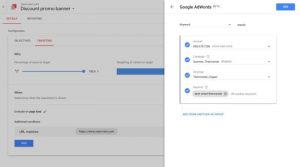Discover why flexible employee schemes underpin the future of collaborative working.

If you’ve got a decade or more of HR experience under your belt, you’ll notice the traits that unite the candidate pool are changing a lot faster these days. Douglas Coupland’s Generation X had a good run, but Generation Y (the Millennials) is already moving into management – and Z, the post-Millennial generation, is already thinking about getting a LinkedIn profile.
How can today’s HR professionals bring a measure of control when dealing with these empowered, connected individuals?
Many HR departments are restricted by traditional hierarchical corporate structures and the desire to control employees. But maybe control isn’t the answer. Maybe it’s worth exploring how setting people free with flexible employee schemes is the way to drive today’s connected organisation forward…
86% of employees said agile working improves productivity
…and how today’s technology lets you do it.
Let’s look at the question from two sides. How you can empower employees who demand flexibility without it leading to chaos, and how you can empower yourself as an HR professional to deal with these new workforce demands?
From enabling flexible employee schemes…
Since the provision of flexible working arrangements by companies became a legal requirement, understandably, the key demand from today’s workforce is how companies can facilitate their needs.
Flexibility is also a demand for those not yet in work, or looking to move companies. In order to remain competitive in the war for talent and to attract the top graduates, HR Managers must embrace these demands.
It is no secret that millennials are demanding greater flexibility within work and 78% of millennials stated innovation within an organisation has influenced their job searches.
It’s not an empty attitude; the sheer nature of today’s longer working hours, combined with issues such as childcare, just don’t allow today’s workforce to spend every working hour in the office. So why not let them work outside it?
Flexible employee schemes are key. Here are a few considerations that you might want to discuss with your IT department:
- Include the full spectrum of devices. They may use a company laptop or phone, but it’s highly likely they’ll also want to use their own tablet or desktop in familiar surroundings. If BYOD (Bring Your Own Device) working is an option at your company make sure that your collaborative technologies can cope.
- Allow people to communicate easily. 64.7% of respondents in Arkadin’s – ‘Where are you on the UC journey survey’ believed that “no single (communications) solution is right for all employees”, so make sure your workforce can communicate easily with each other in a way that suits them. This could be through video conferencing, desk based instant messaging, mobile based messaging or email – whatever the medium of communication the key is that it suits the user.
- Choose technologies that fully meet your needs. Whatever the top-level strategic goals of your business you need your people to be engaged and invested. Make sure that the technology you implement can facilitate this. Web and video conferencing, for example, can drive collaboration, and engagement, in your workforce in a manner email never could as well as streamlining the editing of any documents. While instant messaging between users can create a culture of harmony throughout the office, it can also help keep everyone up to date with everyone’s projects without the need for constant meetings.
…to changing the mindset of HR
HR Managers know the risks of letting people work out-of-office. But to some extent those risks are overstated. The job market today is so competitive, and flexible working so highly prized, that there’s more chance of employees working too hard than not enough. So unless you have good reason not to, trust your people and just let go.
There are a few pointers to remember:
- Check in – but don’t check up. The traditional HR mindset suggests every action must be monitored. But today’s workforce resists heavy-handed control. So once you’ve put the right communications solutions in place, step back and let people work in the way they prefer.
- Measure – but don’t target. By all means gather useful information such as when your people checked in or how fast they answered meeting requests – but don’t use it as a stick to beat them with. Your employees are adults; their job performance isn’t discernable from such broad-brush measures.
- Remember the work – but don’t forget the fun! Today’s worker values personal fulfillment as much as a salary. If you can make their flexible working arrangements interesting and varied, they’re more likely to stay productive. So don’t worry too much about them chewing the fat with colleagues over your unified communications; that’s their way of feeling “part of it all” when they’re away from the office.
Flexible working isn’t a technology choice; it’s a philosophy to follow. Embrace the principles of flexible employee schemes, and you’re on your way to creating a more engaged, productive and loyal workforce.
Takeaways:
- Changing employee preferences need a change in HR’s mindset
- Flexible employee schemes are about more than “working from home”
- Successful HR policy for flexible working involves letting go
- Today’s employee wants to communicate their way, on their device
- An employee’s job performance isn’t measured by how he communicates
Ready to change your mindset? Download The connected business: The rise of remote working and your HR policy, what you need to know today
This article was first published on the Arkadin blog
(63)










